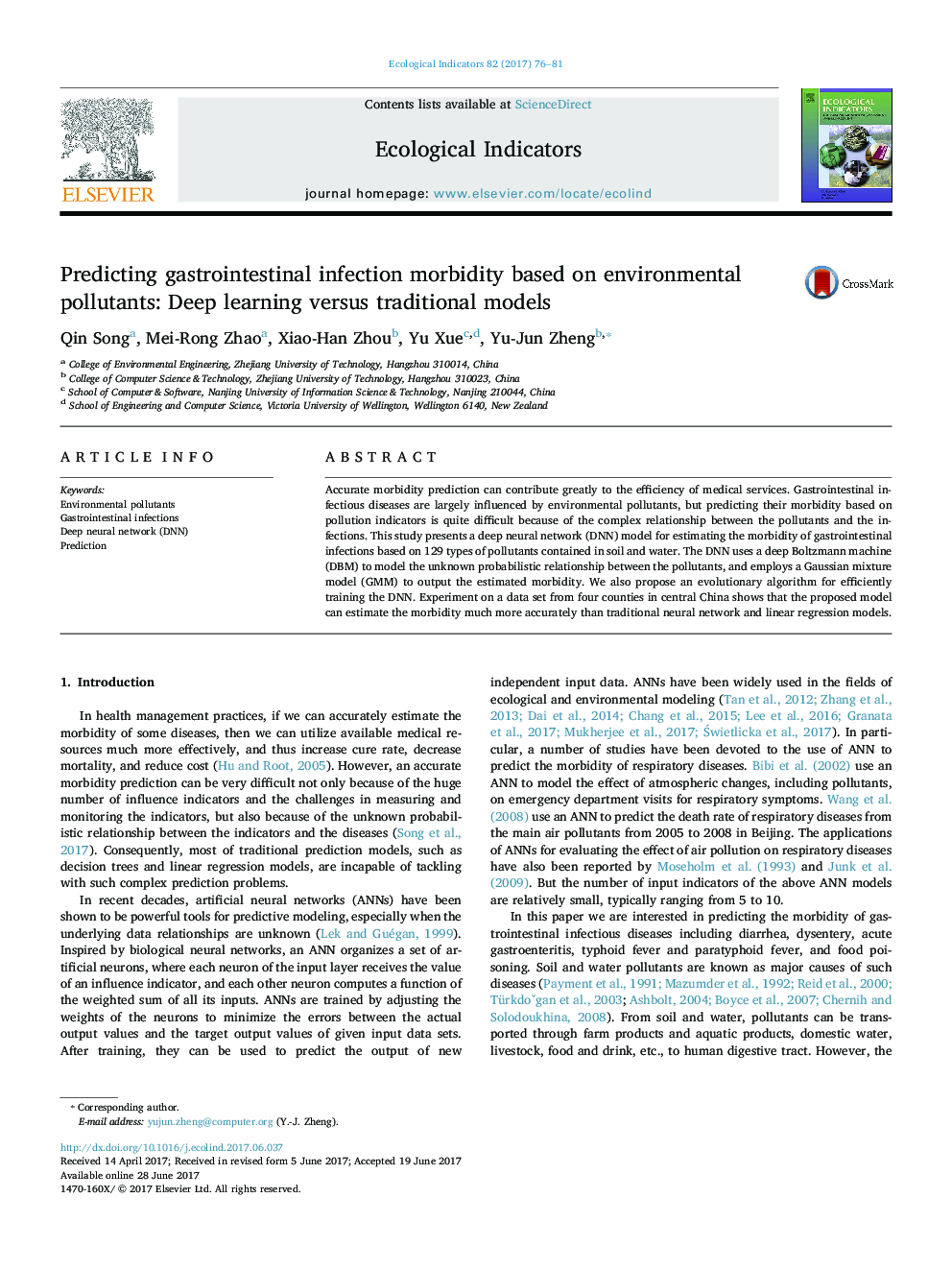| Article ID | Journal | Published Year | Pages | File Type |
|---|---|---|---|---|
| 5741310 | Ecological Indicators | 2017 | 6 Pages |
â¢A deep learning model for predicting gastrointestinal morbidity based on pollutants.â¢A new evolutionary algorithm for training the network.â¢High prediction accuracy obtained on a real-world dataset.
Accurate morbidity prediction can contribute greatly to the efficiency of medical services. Gastrointestinal infectious diseases are largely influenced by environmental pollutants, but predicting their morbidity based on pollution indicators is quite difficult because of the complex relationship between the pollutants and the infections. This study presents a deep neural network (DNN) model for estimating the morbidity of gastrointestinal infections based on 129 types of pollutants contained in soil and water. The DNN uses a deep Boltzmann machine (DBM) to model the unknown probabilistic relationship between the pollutants, and employs a Gaussian mixture model (GMM) to output the estimated morbidity. We also propose an evolutionary algorithm for efficiently training the DNN. Experiment on a data set from four counties in central China shows that the proposed model can estimate the morbidity much more accurately than traditional neural network and linear regression models.
Graphical abstractDownload high-res image (238KB)Download full-size image
